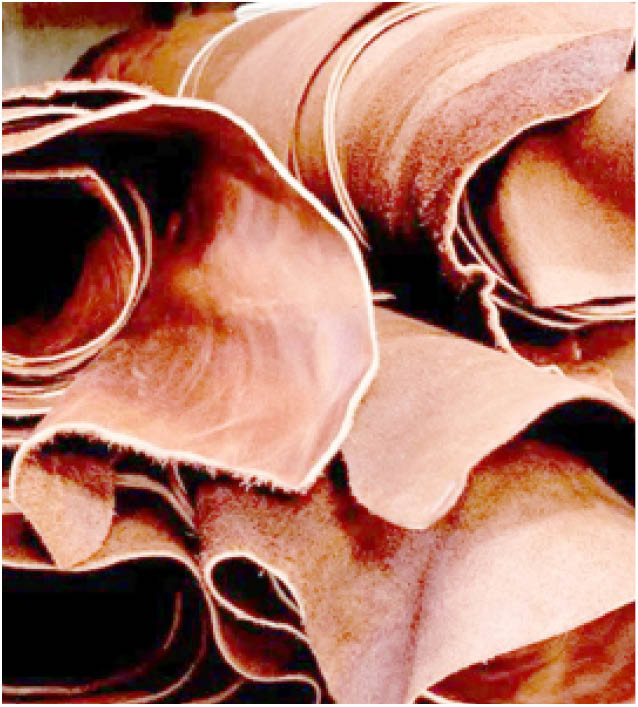Despite huge potential, FG neglects leather value chains
Even as export estimated at N419bn by 2025 Leather and leather value chain products are among the most widely traded livestock-based products of the agric sector in the world. The sector has the longest value chain-shoes, bags, seats, crafts, automobile seats, others and is fully integrated into millions of African households, according to Hidenet International […]

Leather
-
Even as export estimated at N419bn by 2025
Leather and leather value chain products are among the most widely traded livestock-based products of the agric sector in the world.
The sector has the longest value chain-shoes, bags, seats, crafts, automobile seats, others and is fully integrated into millions of African households, according to Hidenet International Market Report.
The 2018 Africa’s Hides & Skins, Leather and Leather Products import and Export value was $2.55bn while the estimated potential of the sector is up to $40bn.
According to “A Blueprint for the African Leather Industry” report commissioned by the UN Industrial Development Organization and jointly prepared by ITC, the Food and Agriculture Organization and the Common Fund for Commodities, African countries are estimated to have 20 per cent of the world’s cattle, sheep and goats, but produce only 14.9 per cent of world output of hides and skins.
They have 10 per cent of the world’s cattle but produce only 4.5 per cent of bovine hides. Their exports of hides and skins have fallen in recent years from 4 per cent to 2 per cent, and their tanning capacity from 9.2 to 6.8 per cent.
The report identifies Africa’s potential and makes recommendations to players in the supply chain – governments, the private sector and international organizations.
The global leather goods market reached a value of $350.7bn in 2020. Looking forward, the market is expected to grow at a CAGR of 5.5 per cent during 2021-2026 to hit $450bn said Research and Markets, the world’s largest market research store.
Last year, the Nigeria Economic Summit Group (NESG) estimated that Nigeria’s leather industry could generate over N419bn (about $1bn) in export earnings by 2025.
At the last livestock conference, experts again accused the federal government for neglecting the leather value chain in Nigeria despite the country’s relative advantage in livestock production.
“Potentials of the leather industry have not been fully tapped despite its huge potential as a foreign exchange earner and contributor to domestic jobs and wealth,” a working group at the conference noted.
Despite the launching of the implementation plan of the leather and leather products policy by the Vice President, Professor Yemi Osibanjo, in 2021 and the Inauguration of inter-ministerial steering committee on the National Leather and Leather Products Policy Implementation Plan, the policy has not achieved significant progress.
Experts want the federal government to support the development of Nigerian brand of FLGs and establishment of shoe manufacturing clusters in Aba, Kano, Kaduna, Abuja, Lagos and Nasarawa states and rehabilitate and bring into life moribund hides and skin plants and tanneries.
